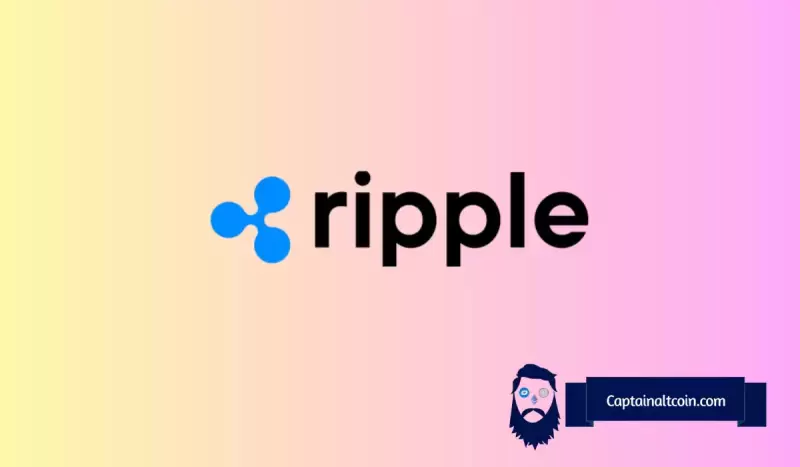 |
|
 |
|
 |
|
 |
|
 |
|
 |
|
 |
|
 |
|
 |
|
 |
|
 |
|
 |
|
 |
|
 |
|
 |
|
これは2015年でした。研究者はベン・フィールディングで、AIを開発するために初期のGPUを詰めた大きな機械を建設しました。

A noisy desk in a lab at Northumbria University, in northern England, is where a young AI researcher began his PhD track in 2015. He was working on some unorthodox ideas, exploring how “swarms” of AIs could talk to each other and learn from each other to improve the collective whole. But he was handcuffed by the realities of that noisy machine, which he had built to house early GPUs for his research.
イングランド北部のノーサンブリア大学の研究室での騒々しい机は、2015年に若いAIの研究者が博士号トラックを始めた場所です。彼はいくつかの非正統的なアイデアに取り組んでおり、AIの「群れ」が互いに話し合い、集団全体を改善するために互いに学ぶことができる方法を探りました。しかし、彼は彼の研究のために初期のGPUを収容するために構築したその騒々しいマシンの現実に手錠をかけられました。
The machine was so loud it annoyed his lab-mates, and he had crammed it beneath his desk, leaving no room for his legs, which he had to awkwardly stick to the side of the desk.
マシンは非常に騒々しいので、彼のラボの仲間を悩ませていて、彼は机の下にそれを詰め込んでいたので、彼の足の余地を残しませんでした。
At the time, Google was doing similar research with thousands of GPUs in a data center.
当時、Googleはデータセンターで数千のGPUを使用して同様の研究を行っていました。
“The things they were doing weren't crazy. I knew the methods … I had lots of proposals, but I couldn't run them,” says Ben Fielding, who is now CEO of Gensyn and a speaker at Consensus 2025.
「彼らがやっていたことは狂っていませんでした。私は方法を知っていました...私は多くの提案がありましたが、私はそれらを実行できませんでした」と、現在GensynのCEOであり、コンセンサス2025のスピーカーであるBen Fielding氏は言います。
Fielding and his co-founder, Harry Grieve, started Gensyn in 2020, with the goal of creating a decentralized network for machine intelligence.
フィールディングと彼の共同設立者であるハリーグリーブは、マシンインテリジェンスのための分散ネットワークを作成することを目標に、2020年にジェンシンを開始しました。
Gensyn is now rolling out the first stage of its Testnet, and the company's early tools are beginning to trickle out into the wild. Gensyn recently released its “RL Swarms” protocol, a descendant of Fielding's PhD work, and just launched Testnet, which brings blockchain into the fold.
Gensynは現在、テストネットの最初の段階を展開しており、会社の初期のツールは野生に流れ始めています。 Gensynは最近、Fieldingの博士課程の仕事の子孫である「RL Swarms」プロトコルをリリースし、ブロックチェーンを折りたたむテストネットを発売しました。
Gensyn's Testnet is a beta version of the company's core infrastructure, offering a glimpse into the broader vision.
Gensynのテストネットは、会社のコアインフラストラクチャのベータ版であり、より広いビジョンを垣間見ることができます。
In this interview leading up to the AI Summit, at Consensus in Toronto, Fielding gives a primer on AI Swarms, explains how blockchain snaps into the puzzle, and shares why all innovators — not just tech giants — “should have the right to build machine learning technologies.”
トロントでコンセンサスでAIサミットに至るまでのこのインタビューで、フィールディングはAIの群れの入門書を提供し、ブロックチェーンがパズルにスナップする方法を説明し、なぜすべてのイノベーターがハイテクジャイアンツだけでなく、「機械学習技術を構築する権利があるべきである」と共有しています。
This interview has been condensed and lightly edited for clarity.
このインタビューは凝縮され、明確に編集されています。
Jeff Wilser: Gensyn just launched its Testnet. What’s the gist of what it is?
ジェフ・ウィルサー:ジェンシンはテストネットを立ち上げました。それが何であるかの要点は何ですか?
Ben Fielding: It's the addition of the first MVP features of blockchain integration with what we've launched so far. So a few weeks ago, we launched RL Swarm, which is reinforcement learning, post-training as a peer-to-peer network.
Ben Fielding:これは、これまでに開始したものとブロックチェーン統合の最初のMVP機能の追加です。数週間前、私たちはRL Swarmを発売しました。RLSwarmは、ピアツーピアネットワークとしてトレーニング後の補強学習であるRL Swarmを立ち上げました。
The easiest way to think about it is when a pre-trained model goes through reasoning training — like Deep-R1 — it learns to critique its own thinking and recursively improve against the task. It can then improve its own answer.
それについて考える最も簡単な方法は、事前に訓練されたモデルがDeep-R1のような推論トレーニングを受けるとき、それは独自の思考を批判し、タスクに対して再帰的に改善することを学ぶことです。その後、独自の答えを改善できます。
We take that process one step further and say, "It's great for models to critique their own thinking and recursively improve. What if they can talk to other models and critique each other's thinking?" If you get many models together in a group that can all talk to each other, they can start learning how to send information to the other models … with the overall goal of improving the entire swarm itself.
私たちはそのプロセスをさらに一歩進めて、「モデルが自分の思考を批判し、再帰的に改善するのは素晴らしいことです。他のモデルと話をしてお互いの考えを批判できるとしたらどうでしょうか?」すべてが互いに話し合うことができるグループで多くのモデルをまとめると、他のモデルに情報を送信する方法を学び始めることができます。
So that's the swarm training method, which allows many models to combine in parallel to improve the outcome of a final meta-model that you could create from those models. But at the same time, you have every single individual model just improving on its own. So if you were to come along with a model on a MacBook, join a swarm for an hour and then drop back out again, you would have an improved local model based on the knowledge in the swarm, and you would have also improved the other models in the swarm. It's this collaborative training process that any model can join and any model can do. So that's what RL Swarm is.
これがSwarm Training Methodであり、多くのモデルが並行して組み合わせて、それらのモデルから作成できる最終メタモデルの結果を改善できます。しかし、同時に、個々のモデルがすべて独自に改善するだけです。したがって、MacBookでモデルを使用して1時間群れに参加してから再びドロップアウトする場合は、群れの知識に基づいてローカルモデルが改善され、群れの他のモデルも改善されています。これは、あらゆるモデルが参加し、あらゆるモデルが行うことができるこの共同トレーニングプロセスです。それがRL Swarmです。
Wilser: Okay, and then where does blockchain come in?
ウィルサー:わかりました、そしてブロックチェーンはどこに入ってきますか?
Ben Fielding: So the blockchain is us moving forward some of the lower-level primitives into the system.
Ben Fielding:それで、ブロックチェーンは、私たちがより低レベルのプリミティブのいくつかをシステムに前進させることです。
Let's just pretend that someone doesn't understand the phrase "lower-level primitives." What do you mean by that?
誰かが「下位レベルのプリミティブ」というフレーズを理解していないふりをしてみましょう。それはどういう意味ですか?
If you think about the software stack, you've got a GPU stack in a data center. You've got drivers on top of the GPU. You've got operating systems, virtual machines. You've got all this stuff going up.
ソフトウェアスタックについて考えると、データセンターにGPUスタックがあります。 GPUの上にドライバーがいます。オペレーティングシステム、仮想マシンがあります。あなたはこれらすべてのものを上げています。
A lower-level primitive is the closest to the bottom foundation in the tech stack.
低レベルのプリミティブは、Tech Stackのボトムファンデーションに最も近いものです。
Wilser: Yes, exactly. And the RL Swarm is a demonstration of what's possible, basically. It's just a somewhat hacky demo of doing really interesting large-scale, scalable machine learning. But what Gensyn's been doing for the past four-plus years, realistically, is building infrastructure. And so we're in this period now where the infrastructure is all at that v0.1 sort of beta level. It's all done. It's ready to go. We have to figure out how to show the world what's possible when it's quite a big shift to the way people think of machine learning.
ウィルサー:はい、まさに。そして、RL Swarmは、基本的に可能なことのデモです。これは、非常に興味深い大規模でスケーラブルな機械学習を行うというややハッキーなデモです。しかし、Gensynが過去4年以上にわたって現実的に行ってきたことは、インフラストラクチャを構築することです。そして、私たちは今、インフラストラクチャがすべてそのv0.1種類のベータレベルにあるこの期間にいます。それはすべて完了です。行く準備ができています。私たちは、人々が機械学習を考える方法に非常に大きな変化であるときに、世界に何が可能かを示す方法を理解する必要があります。
It sounds like you guys are
君たちのように聞こえます
免責事項:info@kdj.com
提供される情報は取引に関するアドバイスではありません。 kdj.com は、この記事で提供される情報に基づいて行われた投資に対して一切の責任を負いません。暗号通貨は変動性が高いため、十分な調査を行った上で慎重に投資することを強くお勧めします。
このウェブサイトで使用されているコンテンツが著作権を侵害していると思われる場合は、直ちに当社 (info@kdj.com) までご連絡ください。速やかに削除させていただきます。



























































